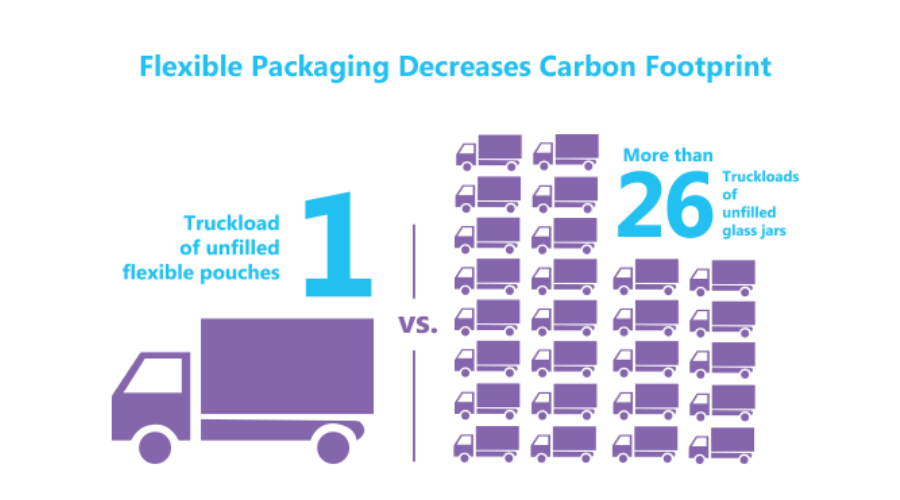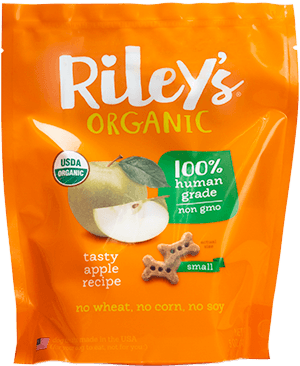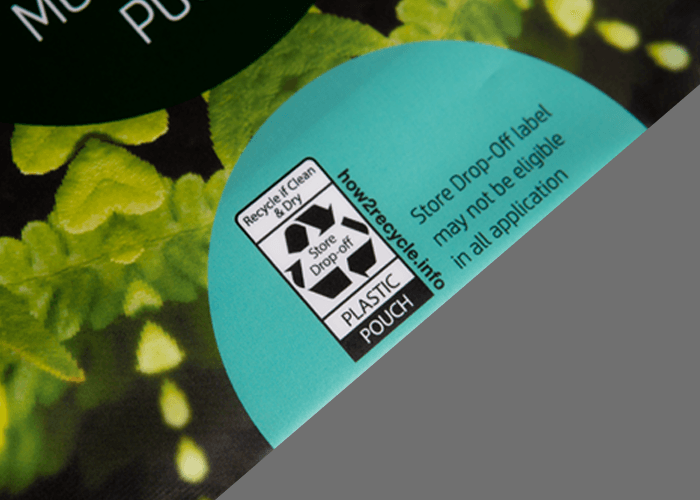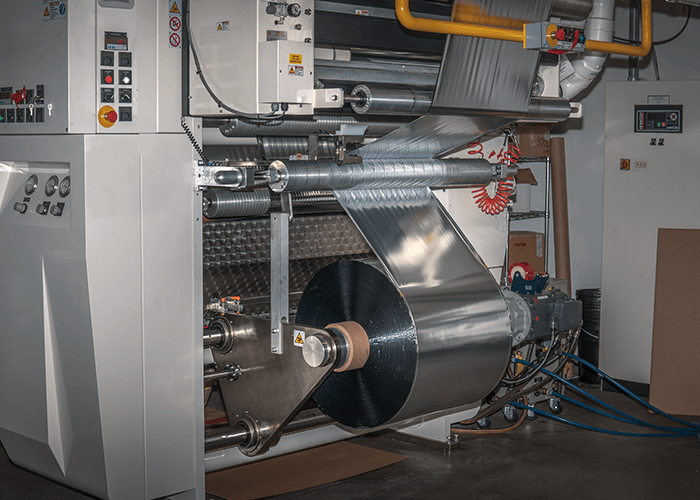As a CPG firm, small or large, the pressure is on for you to increase your brand’s sustainability. From choosing recycled materials, reducing your carbon footprint, and lightweighting your packaging, there are many ways to adopt sustainable practices to create a more environmentally conscious brand.
But have you considered the difference between eco-friendly packaging and being a sustainable company? In this post we will explore what it means to be sustainable, what kinds of packaging are considered eco-friendly, and the best practices that will help you boost your overall sustainability.
An Emphasis on Eco-Friendly Materials

As you explore creating your next package, it’s important to consider that materials matter.
Are you packaging your product in a rigid plastic container or a flexible pouch? Which one is more eco-friendly, and why?
You may already know this, but flexible packaging is highly regarded for its many consumer benefits, from its ease of use, light weight and shatterproof properties, as well as numerous sustainable benefits.
According to the Flexible Packaging Association (FPA), flexible packaging uses less resources to create than other package formats.
Image Source: Flexible Packaging Association (FPA)
“For example, to create packaging for 60 pounds of beverage, you would need 50 pounds of glass, six pounds of rigid PET (polyethylene terephthalate), three pounds of aluminum and a mere one and a half pounds of flexible plastic.”

The lightweight nature of flexible packaging results in the optimal amount of packaging being used, with the least amount of resources necessary to protect the product.
This lighter weight also means that flexible packaging costs far less to transport as more packages can fit on each truckload. According to the FPA, to transport packaging for equal amounts of product, you would need 26 truckloads of unfilled glass jars, compared to only one truckload of unfilled flexible pouches.
With flexible packaging, you can also choose specific eco-friendly materials like PCR (post-consumer recycled), fully recyclable films, and even biodegradable or compostable options.
At ePac, we offer recyclable PE-PE films, which are suitable for store drop-off recycling programs, as well as films made from PCR resin content that are FDA-compliant for direct food contact and can accommodate high-impact, photo-quality graphics.
We also offer compostable options for stand-up pouches, lay flat pouches, and rollstock made from certified compostable materials. These pouches are composed of compostable certified films, inks, lamination, adhesive, and zippers, and are free of fossil and petroleum plastics. These material options are considered eco-friendly and will go a long way in reducing your company’s carbon footprint, as well as get you noticed by eco-conscious shoppers.*
A Sustainable Approach
Aside from the materials involved in package development, it’s important to consider the sustainable practices that make a company or brand “green.” It really comes down to the packaging or printing process.
Did you know that compared to analogue, or conventional printing, digital printing is a far more sustainable option since it uses less energy, produces less waste, and has a smaller carbon footprint overall? When compared to traditional (or analogue) printing, digital printing:
- Reduces the impact on the environment
- Saves time at set up
- Saves on materials and transport with short runs
- Affords you the ability to print on demand
- Saves on the waste of unsold inventory
- Offers a streamlined ordering process, taking the confusion (and time) out of ordering and customizing your perfect package
At ePac we use only carbon-neutral HP printers that ensure that the process of digitally printing our quality pouches and rollstock has a lower environmental impact than conventional printing.
The HP digital printers at ePac use polymer-based inks, which do not contain any hazardous air pollutants (HAPs). These sustainable inks consume less energy and emit fewer greenhouse gases than solvent-based or UV-curable inks typically used in traditional packaging manufacturing.
Plus, digital printing helps to reduce waste. Because there are no plates to set up at the start of each project, less materials are required. No plates mean less materials to create initially and then replace over the years, as well as for the setup of each individual SKU.
Also, with this technology, you can order what you need when you need it. This allows you to avoid wasting unused or obsolete packaging from a changed recipe, branding or design changes, regulation changes, or even unused product from a decrease in sales.
Ordering on demand also means you never have to hold a large inventory, unless you want to. A reduction in excess inventory not only prevents brands from their unused packaging going into the landfill, but also saves brands potentially wasted money.
While there are several ways to improve your company’s overall sustainability, focusing on the packaging (both materials and printing process) is a huge step toward going green.
Consider that the type of packaging and printing can help you reduce waste and emit fewer carbon emissions. Want to learn more about all of the green benefits of utilizing digitally printed flexible packaging? Give us a call and we will walk you through our many sustainable options so you can get started today.
*depending on material availability.



